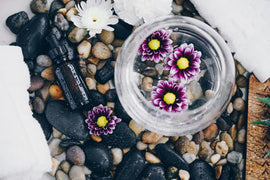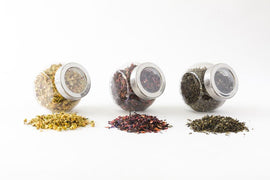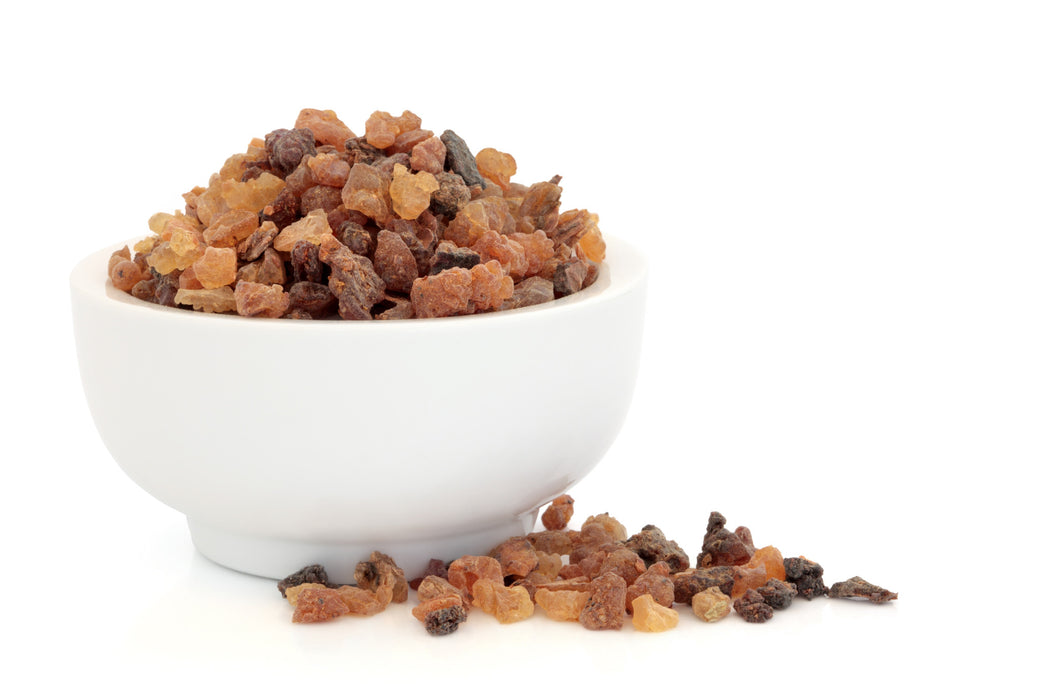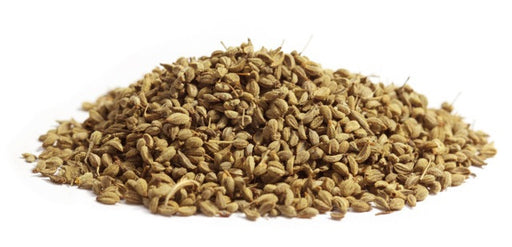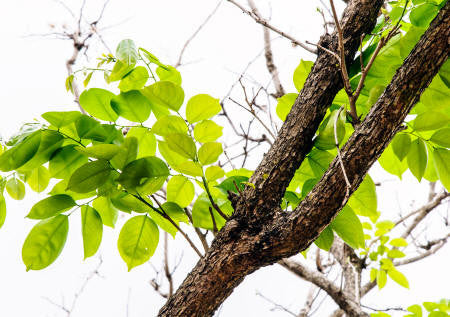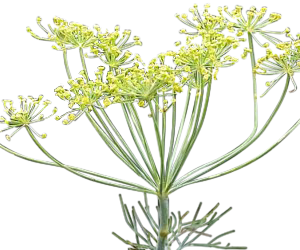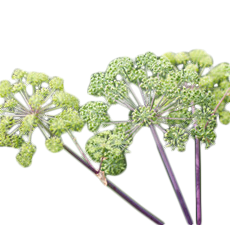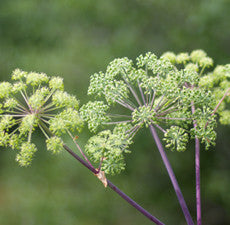Myrrh Essential Oil (Egypt)
Botanical Name: Commiphora myrrha
Plant Part: Resin
Extraction Method: Solvent Extraction
Origin: Egypt
Description: Though classified as shrubs, Myrrh can grow up to 30feet in height. The trunk exudes a natural oleo resin that hardens into what is classified as reddish brown “tears”. Native collectors make incisions into the trees in order to increase the yield.
Color: Dark brown liquid.
Common Uses: Myrrh Essential Oil is thought to enhance spirituality. Aromatherapists use it as an aid in meditation or before healing. Its actions are characterized as the following: antimicrobial, antifungal, astringent and healing, tonic and stimulant, carminative, stomachic, anti-catarrhal, expectorant, diaphoretic, vulnerary, locally antiseptic, immune stimulant, bitter, circulatory stimulant, anti-inflammatory, and antispasmodic.
Consistency: Medium
Note: Middle
Strength of Aroma: Medium
Blends well with: Frankincense, Lavender, Palmarosa, Patchouli, Rose, Rosewood, Sandalwood, Tea Tree and Thyme.
Aromatic Scent: Myrrh Essential Oil has a warm, rich, spicy balsamic odor.
History: Myrrh has been used for centuries as an ingredient in incense, perfumes, and for embalming and fumigation in Ancient Egypt. In folk tradition it was used for muscular pains and in rheumatic plasters. Called mo yao in China, it has been used since at least 600B.C. primarily as a wound herb and blood stimulant. Gerard said of myrrh ' the marvelous effects that it worked in new and green wounds were here too long to set down...' Myrrh Oil, distilled from the resin, has been used since ancient Greek times to heal wounds.
General Information: Sunrise Botanics provides this essential oils guide for educational purposes only and not as medical advice. Please consult a qualified healthcare practitioner or resource on uses, safety and precautions for all essential oils Canada, USA and Worldwide.


















































































